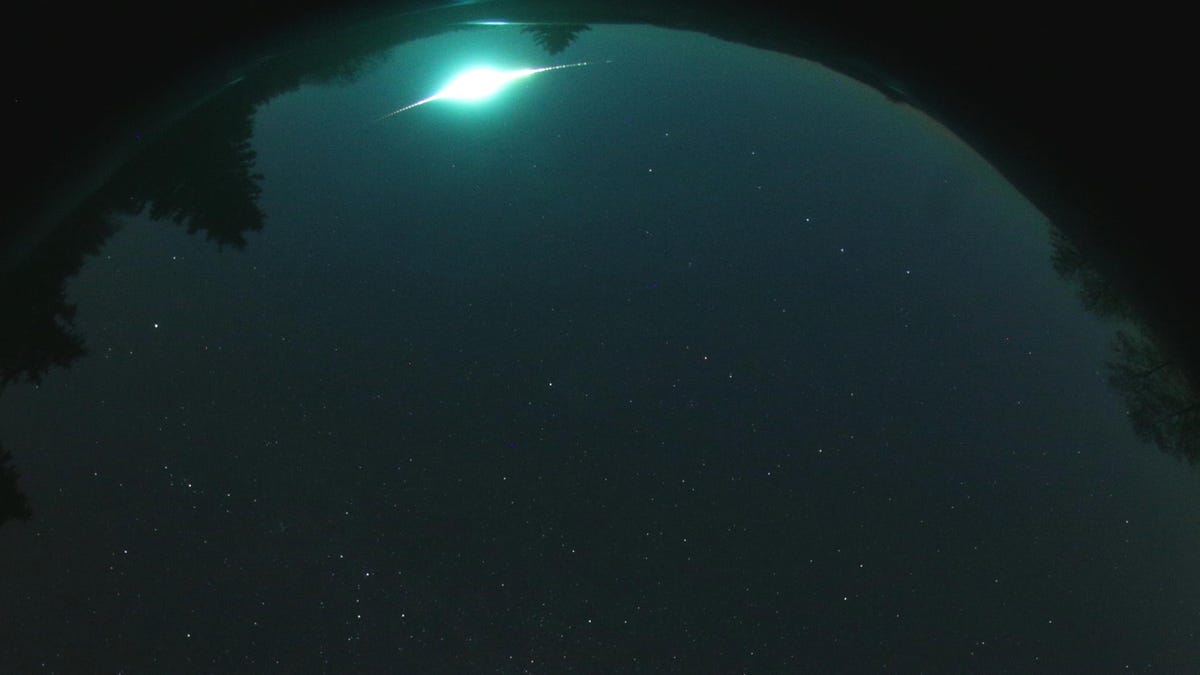How to Catch Taurid Fireballs as the Meteor Shower Peaks This Week
The annual meteor shower is due for a fiery outburst and is delivering already.

A Taurid fireball captured in 2015.
There's still time to catch this year's fireball-laden Taurid meteor shower, which is due for a second peak in activity this week.
Every year right around now, Earth drifts through a cloud of debris left behind by Comet 2P/Encke that's associated with the Taurid meteor shower. And every seven years or so, our planet visits a particularly dense pocket of the cosmic detritus that can produce bright fireballs.
The last time we got this Taurid swarm was 2015, so we're due for another this year.
Plenty of observers have already seen indications that the swarm delivered as expected this year, particularly as the south Taurid branch reached its expected peak over the weekend. But the nearby north Taurids branch can produce its own, separate peak a few days later, which is predicted for this Friday evening and early Saturday morning. It's also worth noting that there is some disagreement among astronomers about when exactly peak night will be, but peak of activity for the Taurids tends to be broad rather than centered on a single night or hour. Bottom line, this whole week is still prime Taurid fireball spotting season.
These fireballs aren't anything to worry about. They're basically oversized shooting stars, typically pebble- to softball-size pieces of space stuff that impact our planet and burn up in a sometimes spectacular fashion as they sizzle through our upper atmosphere.
A number of spectacular sizzling shooting stars have already been spotted. It's hard to say for sure if these are actually Taurids or originating from another debris stream, but it's an exciting start either way.
Last night we were able to capture this fireball on our sky cams, a small object like this poses no threat to Earth. We still love to see them though! pic.twitter.com/eDKtbgWz9y
— Catalina Sky Survey (@catalina_sky) November 1, 2022
An extremely bright bolide was observed over #Arizona on Oct 31 which left a smoke trail visible for over 20 minutes!
— Denis Vida (@meteordoc) November 1, 2022
Credit: Matt Cheselka (@AstroAndMusic), Lowell Observatory (@LowellObs)#fireball #meteor pic.twitter.com/dEV8u3Sbum
Interesting capture from one of our ALLSKY7 cameras in #Norway. Wait for it, after the #fireball... pic.twitter.com/huDxPczBM4
— AMSMETEORS (@amsmeteors) November 1, 2022
There is the issue of a full moon on Nov. 8, which means its presence in the night sky this week will wash out many of the more fleeting Taurid shooting stars, but not the fireballs.
In a normal year, you'd be lucky to see one or two fireballs per night. But this week you might be able to catch a few in a single hour, which is quite a treat.
To maximize your chance of catching a Taurid fireball, get as far away from urban light pollution as possible and go outside around midnight local time, preferably on a cloudless evening. Find a spot with a wide view of the sky and try to orient yourself in such a way that the moon isn't in your field of view or at your back. Give your eyes time to adjust and take at least an hour to just relax and watch.
Be sure to dress appropriately for the nighttime climate where you are, and bring refreshments so you aren't tempted to go back inside and lose your night vision.
Remember, don't get spooked. It all burns up before it hits the ground. Well, usually.

